Chongjian Yuan
Voxel-SLAM: A Complete, Accurate, and Versatile LiDAR-Inertial SLAM System
Oct 11, 2024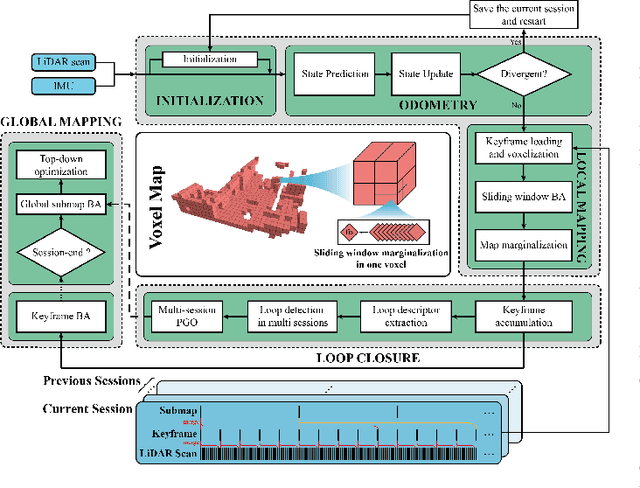
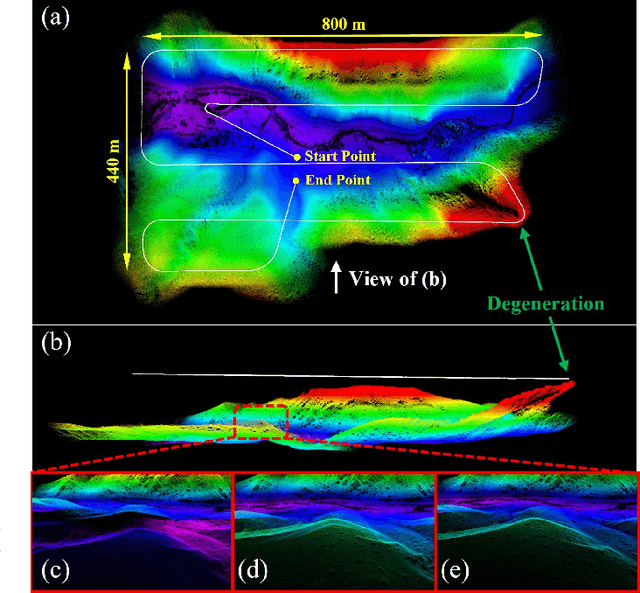
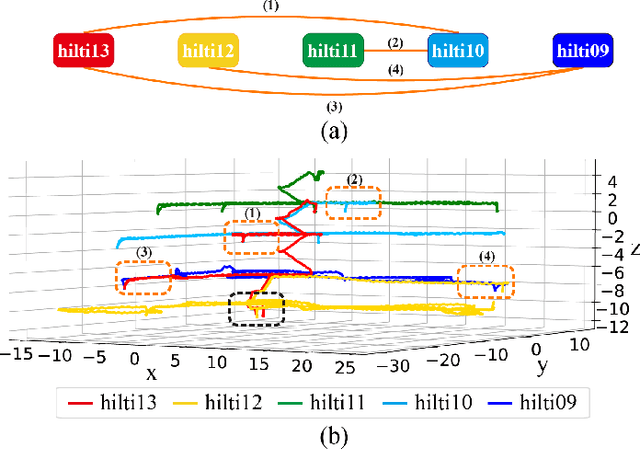
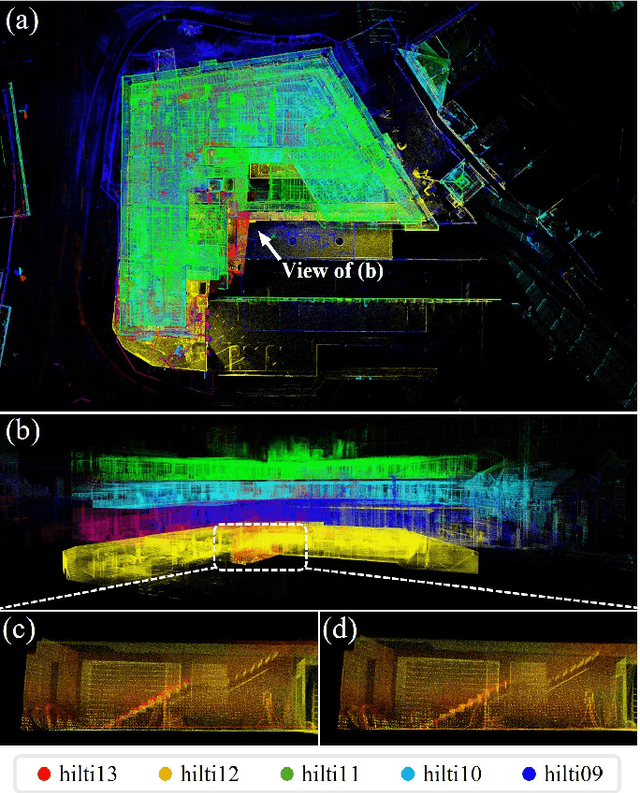
Abstract:In this work, we present Voxel-SLAM: a complete, accurate, and versatile LiDAR-inertial SLAM system that fully utilizes short-term, mid-term, long-term, and multi-map data associations to achieve real-time estimation and high precision mapping. The system consists of five modules: initialization, odometry, local mapping, loop closure, and global mapping, all employing the same map representation, an adaptive voxel map. The initialization provides an accurate initial state estimation and a consistent local map for subsequent modules, enabling the system to start with a highly dynamic initial state. The odometry, exploiting the short-term data association, rapidly estimates current states and detects potential system divergence. The local mapping, exploiting the mid-term data association, employs a local LiDAR-inertial bundle adjustment (BA) to refine the states (and the local map) within a sliding window of recent LiDAR scans. The loop closure detects previously visited places in the current and all previous sessions. The global mapping refines the global map with an efficient hierarchical global BA. The loop closure and global mapping both exploit long-term and multi-map data associations. We conducted a comprehensive benchmark comparison with other state-of-the-art methods across 30 sequences from three representative scenes, including narrow indoor environments using hand-held equipment, large-scale wilderness environments with aerial robots, and urban environments on vehicle platforms. Other experiments demonstrate the robustness and efficiency of the initialization, the capacity to work in multiple sessions, and relocalization in degenerated environments.
FAST-LIVO2: Fast, Direct LiDAR-Inertial-Visual Odometry
Aug 26, 2024

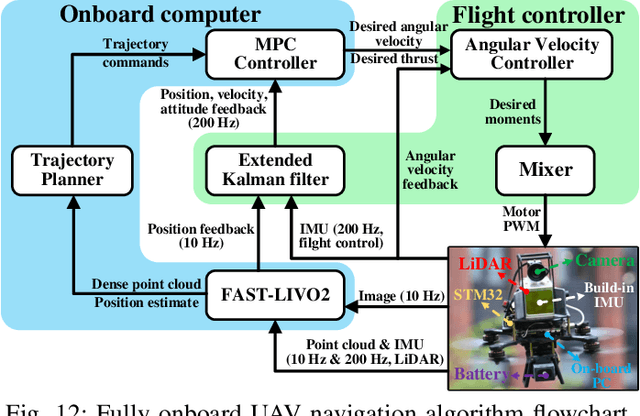

Abstract:This paper proposes FAST-LIVO2: a fast, direct LiDAR-inertial-visual odometry framework to achieve accurate and robust state estimation in SLAM tasks and provide great potential in real-time, onboard robotic applications. FAST-LIVO2 fuses the IMU, LiDAR and image measurements efficiently through an ESIKF. To address the dimension mismatch between the heterogeneous LiDAR and image measurements, we use a sequential update strategy in the Kalman filter. To enhance the efficiency, we use direct methods for both the visual and LiDAR fusion, where the LiDAR module registers raw points without extracting edge or plane features and the visual module minimizes direct photometric errors without extracting ORB or FAST corner features. The fusion of both visual and LiDAR measurements is based on a single unified voxel map where the LiDAR module constructs the geometric structure for registering new LiDAR scans and the visual module attaches image patches to the LiDAR points. To enhance the accuracy of image alignment, we use plane priors from the LiDAR points in the voxel map (and even refine the plane prior) and update the reference patch dynamically after new images are aligned. Furthermore, to enhance the robustness of image alignment, FAST-LIVO2 employs an on-demanding raycast operation and estimates the image exposure time in real time. Lastly, we detail three applications of FAST-LIVO2: UAV onboard navigation demonstrating the system's computation efficiency for real-time onboard navigation, airborne mapping showcasing the system's mapping accuracy, and 3D model rendering (mesh-based and NeRF-based) underscoring the suitability of our reconstructed dense map for subsequent rendering tasks. We open source our code, dataset and application on GitHub to benefit the robotics community.
STD: Stable Triangle Descriptor for 3D place recognition
Sep 26, 2022



Abstract:In this work, we present a novel global descriptor termed stable triangle descriptor (STD) for 3D place recognition. For a triangle, its shape is uniquely determined by the length of the sides or included angles. Moreover, the shape of triangles is completely invariant to rigid transformations. Based on this property, we first design an algorithm to efficiently extract local key points from the 3D point cloud and encode these key points into triangular descriptors. Then, place recognition is achieved by matching the side lengths (and some other information) of the descriptors between point clouds. The point correspondence obtained from the descriptor matching pair can be further used in geometric verification, which greatly improves the accuracy of place recognition. In our experiments, we extensively compare our proposed system against other state-of-the-art systems (i.e., M2DP, Scan Context) on public datasets (i.e., KITTI, NCLT, and Complex-Urban) and our self-collected dataset (with a non-repetitive scanning solid-state LiDAR). All the quantitative results show that STD has stronger adaptability and a great improvement in precision over its counterparts. To share our findings and make contributions to the community, we open source our code on our GitHub: https://github.com/hku-mars/STD.
Efficient and Probabilistic Adaptive Voxel Mapping for Accurate Online 3D SLAM
Sep 21, 2021



Abstract:This paper proposes an efficient and probabilistic adaptive voxel mapping method for 3D SLAM. An accurate uncertainty model of point and plane is proposed for probabilistic plane representation. We analyze the need for coarse-to-fine voxel mapping and then use a novel voxel map organized by a Hash table and octrees to build and update the map efficiently. We apply the voxel map to the iterated Kalman filter and construct the maximum posterior probability problem for pose estimation. The experiments on the open KITTI dataset show the high accuracy and efficiency of our method in contrast with other state-of-the-art. Outdoor experiments on unstructured environments with non-repetitive scanning LiDAR further verify the adaptability of our mapping method to different environments and LiDAR scanning patterns.
Fast and Accurate Extrinsic Calibration for Multiple LiDARs and Cameras
Sep 14, 2021
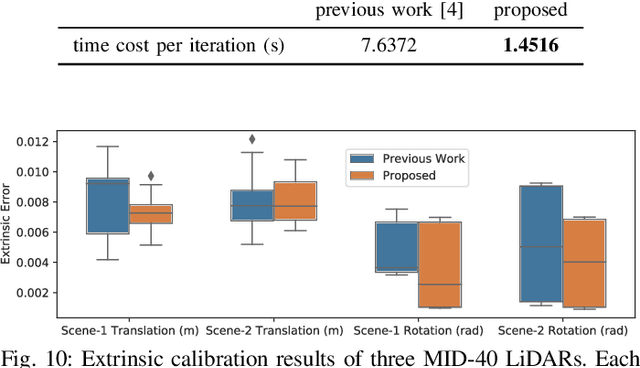

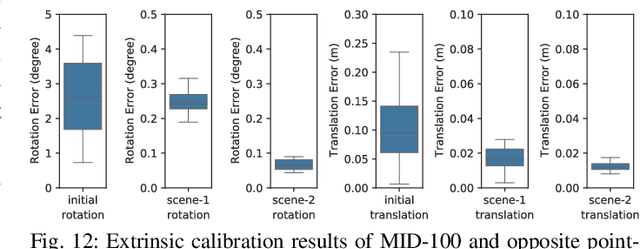
Abstract:In this letter, we propose a fast, accurate, and targetless extrinsic calibration method for multiple LiDARs and cameras based on adaptive voxelization. On the theory level, we incorporate the LiDAR extrinsic calibration with the bundle adjustment method. We derive the second-order derivatives of the cost function w.r.t. the extrinsic parameter to accelerate the optimization. On the implementation level, we apply the adaptive voxelization to dynamically segment the LiDAR point cloud into voxels with non-identical sizes, and reduce the computation time in the process of feature correspondence matching. The robustness and accuracy of our proposed method have been verified with experiments in outdoor test scenes under multiple LiDAR-camera configurations.
Pixel-level Extrinsic Self Calibration of High Resolution LiDAR and Camera in Targetless Environments
Mar 02, 2021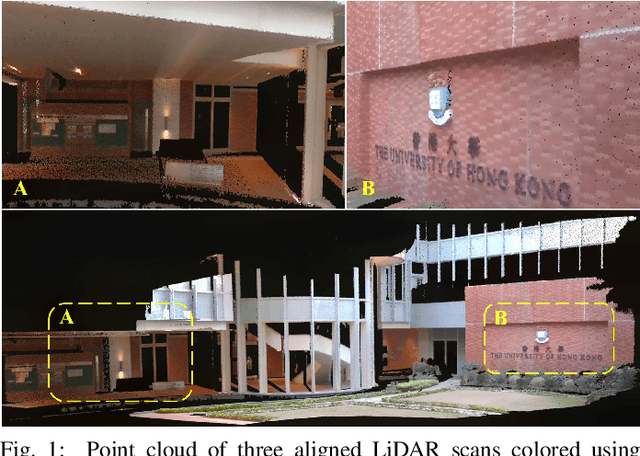
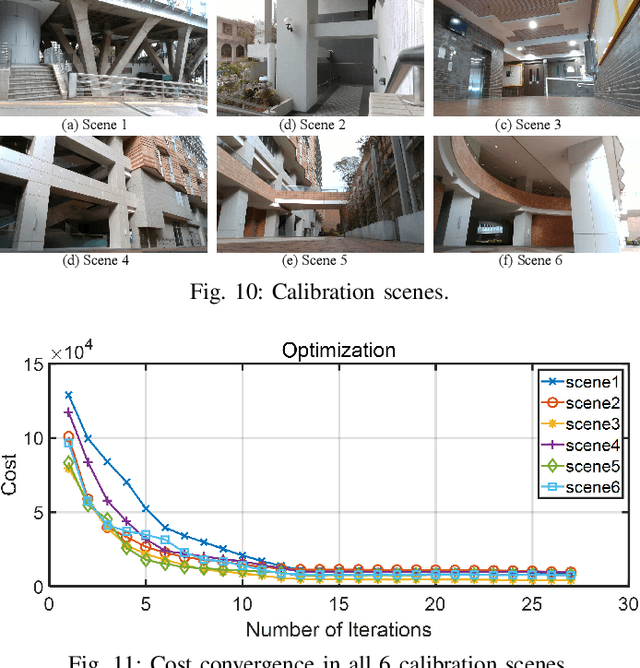


Abstract:In this letter, we present a novel method for automatic extrinsic calibration of high-resolution LiDARs and RGB cameras in targetless environments. Our approach does not require checkerboards but can achieve pixel-level accuracy by aligning natural edge features in the two sensors. On the theory level, we analyze the constraints imposed by edge features and the sensitivity of calibration accuracy with respect to edge distribution in the scene. On the implementation level, we carefully investigate the physical measuring principles of LiDARs and propose an efficient and accurate LiDAR edge extraction method based on point cloud voxel cutting and plane fitting. Due to the edges' richness in natural scenes, we have carried out experiments in many indoor and outdoor scenes. The results show that this method has high robustness, accuracy, and consistency. It can promote the research and application of the fusion between LiDAR and camera. We have open-sourced our code on GitHub to benefit the community.
CamVox: A Low-cost and Accurate Lidar-assisted Visual SLAM System
Nov 23, 2020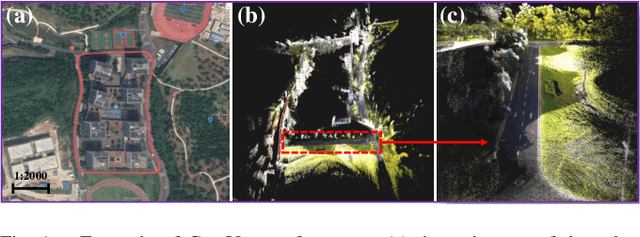
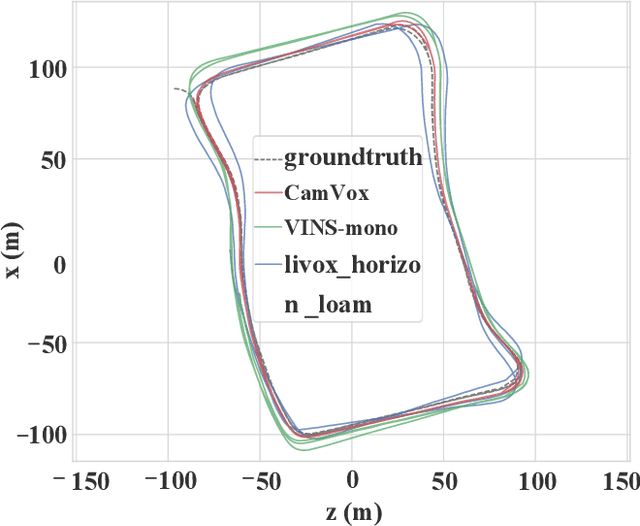
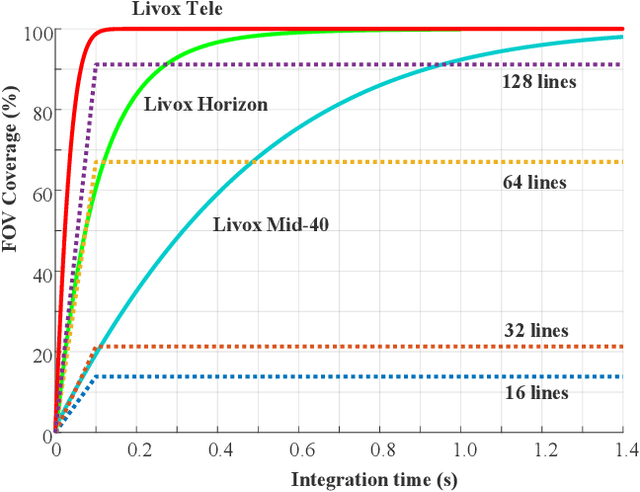
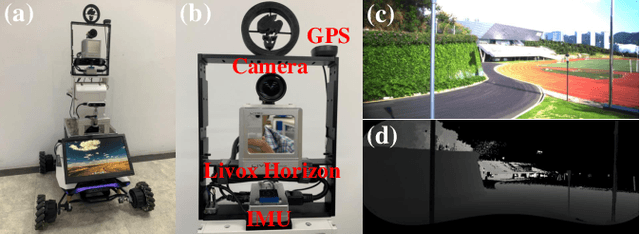
Abstract:Combining lidar in camera-based simultaneous localization and mapping (SLAM) is an effective method in improving overall accuracy, especially at a large scale outdoor scenario. Recent development of low-cost lidars (e.g. Livox lidar) enable us to explore such SLAM systems with lower budget and higher performance. In this paper we propose CamVox by adapting Livox lidars into visual SLAM (ORB-SLAM2) by exploring the lidars' unique features. Based on the non-repeating nature of Livox lidars, we propose an automatic lidar-camera calibration method that will work in uncontrolled scenes. The long depth detection range also benefit a more efficient mapping. Comparison of CamVox with visual SLAM (VINS-mono) and lidar SLAM (LOAM) are evaluated on the same dataset to demonstrate the performance. We open sourced our hardware, code and dataset on GitHub.
 Add to Chrome
Add to Chrome Add to Firefox
Add to Firefox Add to Edge
Add to Edge